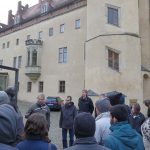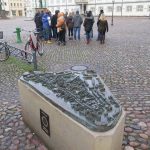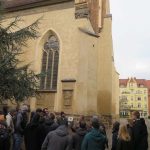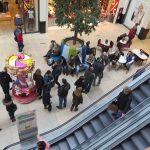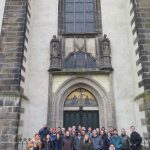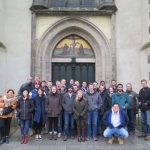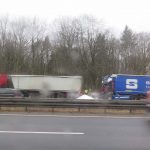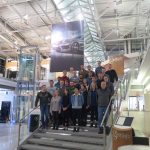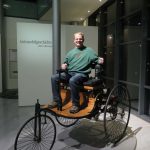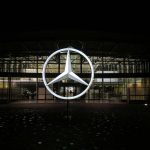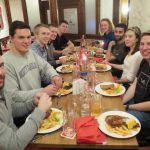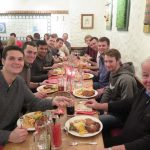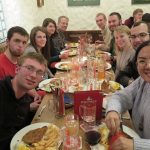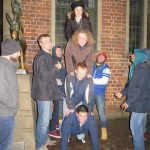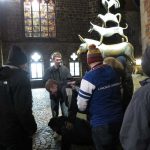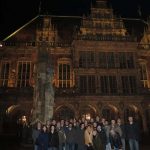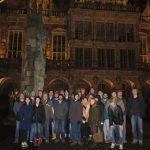The Second World War was a war filled with horrors. From the Katyn Forest Massacre to the biological warfare of the Japanese Unit 731, and from the Korean “comfort women” to the atomic bombing of Japan, one barely needs to look to through the history of World War II to find examples of human beings being horrible to other human beings. Two of these horrors came together yesterday as we visited Dachau and drove past Dresden.
Dachau
Dachau represents the Holocaust, and the Nazis’ “Final Solution” to “The Jewish Problem”. The Holocaust needs very little introduction, but its sheer scale strains belief. At Dachau, between 30,000 and 45,000 people died. This is a lot of people. For some perspective, that is like killing a group of people the size of Calvin’s student body ten times. However, the number of dead at Dachau is four percent of the dead at the death camp of Auschwitz-Birkenau, where, at minimum, one million people died. For comparison, this is one and a half times the number of soldiers who died during the American Civil War. On a bigger scale yet, six million Jews died in the Holocaust. If some horribly bigoted person killed a group of Jews the size of Calvin’s student body every single day for four years running, he or she would still not have killed as many Jews as the Nazis did. This is before, of course, one looks at the Roma and Sinti, the homosexuals, the Jehovah’s Witnesses, the communists, and all of the other groups the Nazis persecuted.
Dachau is a tribute to the dead, but it is a tribute of few words. It is does not need them. The cold efficiency of the crematorium’s design, the rows of barrack outlines, and the very air of the camp hit like a emotional sledgehammer, far more eloquent than any speech. However, five words define Dachau. The first three are found on the gate, though which the inmates and the visitors enter. The words are “Arbeit Macht Frei” (work makes free). This was the motto of the Nazi concentration camp system, a reflection of the fact that the occupants of the camp would often find release solely in a death brought about by overwork. These are the words of death.
The remaining two words that define Dachau are found on on the former parade ground, on a stone wall. The two words are “Nie Wieder” (never again). These are the words of memory, that the dead should not have died in vain, but that the horror of their death should lead those of us among the living to never allow such a terror to happen again.
Dresden
On February 13, 1945, with the war almost won, Royal Air Force Bomber Command launched a raid on Dresden, aiming to burn the city to the ground. At this, they succeeded. An inferno with temperatures as high as 1500 degrees Fahrenheit devastated the city known as the “Florence of the Elbe”, guttings its buildings and immolating its citizens. Follow-up raids by Bomber Command and the US 8th Air Force contributed to the destruction. By the time the fire was out, eight square miles of the city lay in ruins. According to the best estimate, 25,000 people died in the flames.
To this day, debate rages over whether the annihilation of Dresden was justified or if it was a war crime. Arguments can be made for both sides. What is indisputable, however, is that we must not forget the horror that visited Dresden on February 13, 1945. War may be hell, as William T. Sherman so bluntly put it, but that does not mean that hell should be intentionally inflicted on other people.
Both Dachau and Dresden mark the capacity of humans to be cruel to humans. Even though several of Dresden’s architectural landmarks have been rebuilt, and Dachau has been significantly remodelled, the scars of the horrors that happened there still show today. Let us remember these scars.




